This semi-detached house in Singapore marks a significant milestone for ArMo Design Studio, as it is the inaugural project the firm has completed since its founders, Diego Molina and Maria Arango, established their own practice in 2021. Both hail from Colombia, where they studied architecture at the esteemed Pontificia Universidad Javeriana. Following that was a stint at the office of renowned Colombian architect Giancarlo Mazzanti in Bogotá. In 2001, the couple – partners in work and marriage – arrived in Singapore. Before long, they had spent 20 years at Ong&Ong and designed more than 100 houses with the firm.
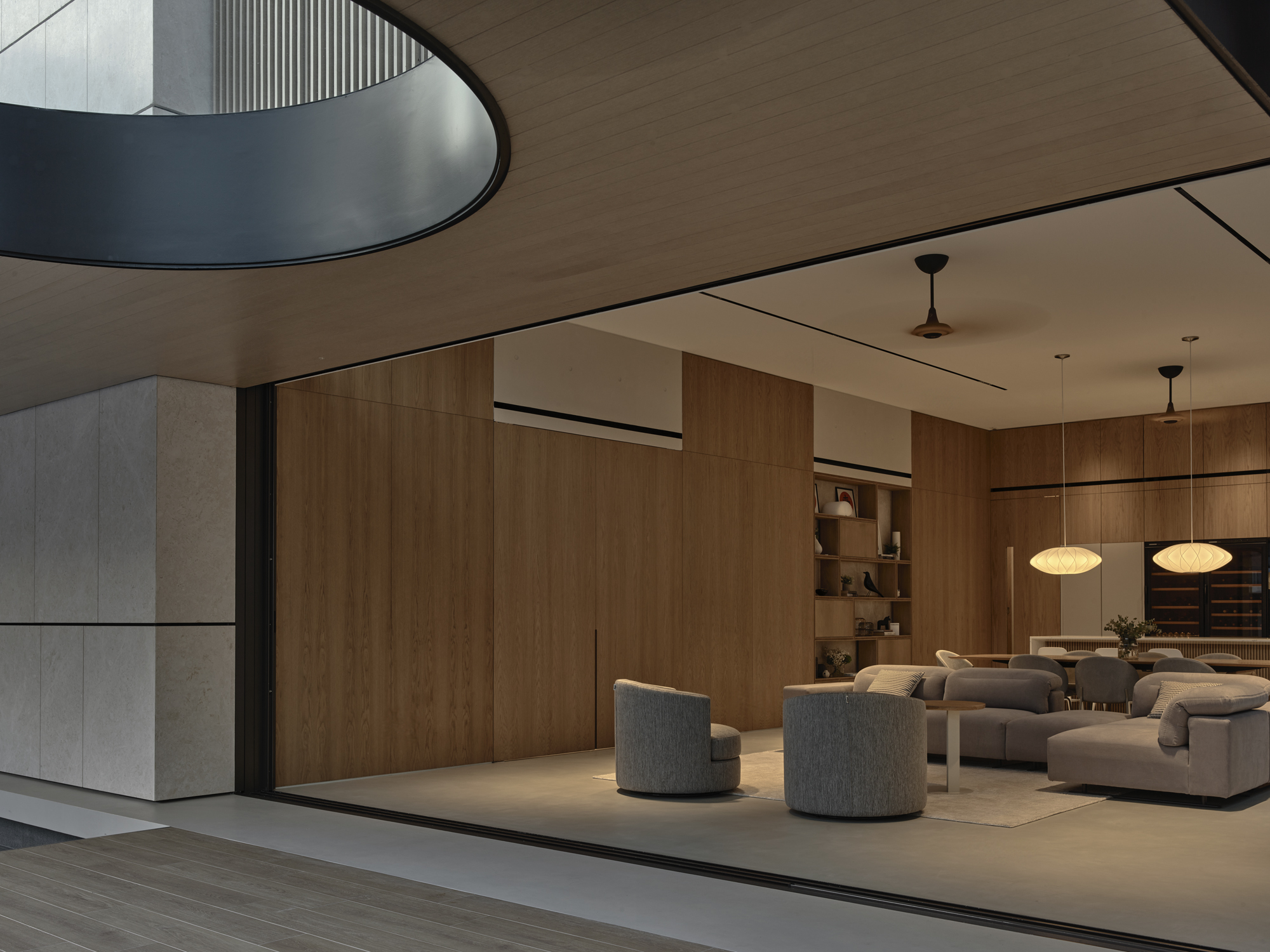
At Ong&Ong, they garnered a devoted following for their elegant, well-proportioned, and practical tropical houses. This philosophy endures in the design of this house for a couple and their two children.
“The vision shared by the owner was to create a light-filled and airy house that is functional yet does not compromise on aesthetics. They wanted a contemporary home that evokes a sense of warmth as one walks in. The overall neutral tones reflect this,” explains Arango.
(Related: Domestic Obsessions)
- FIT FOR THE TROPICS
- ADAPTABILITY AND LIVEABILITY
- THE PLEASURES OF LIGHT
Fit for the Tropics
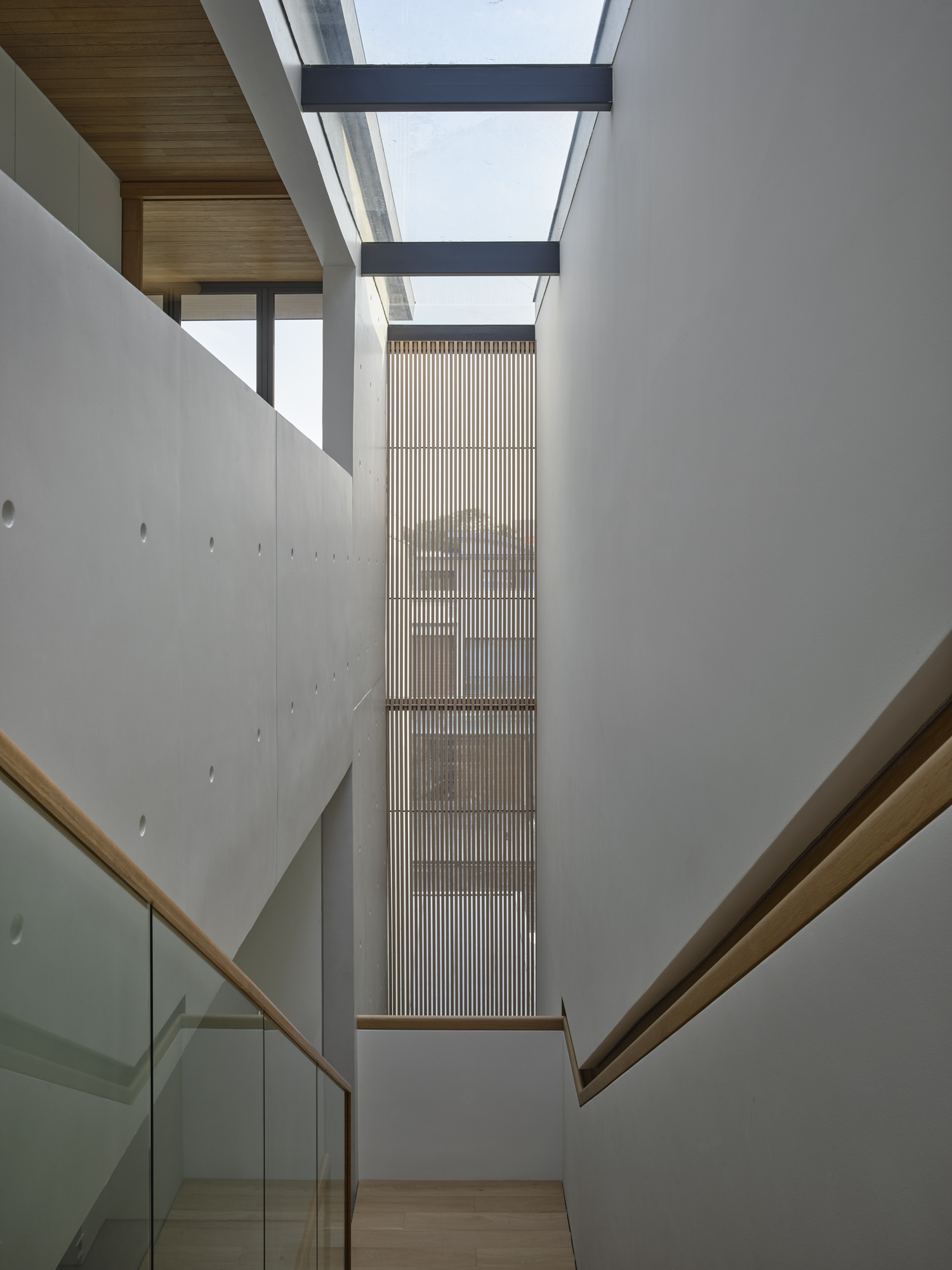 White walls, natural light, and light timber evoke a minimalist sensibility
White walls, natural light, and light timber evoke a minimalist sensibility
Not surprisingly, the architectural designers were able to relate to their host country’s tropical and isothermal conditions well, as Colombia and Singapore are both close to the equator and share similar climatic characteristics. “At ArMo, sustainability is a fundamental principle, and we prioritize both active and passive strategies in our designs. Our approach integrates form and function seamlessly, allowing for the incorporation of tropical living elements alongside advanced technology to ensure comfort and environmental consciousness,” Molina expounds.
To this end, the couple’s projects are similar in that they all allow for natural cross ventilation, light, and shade. But the expression of each is unique, as they are tailored for different occupants and contexts. The functionality of this house was emphasised in the brief. “We didn’t want to be beholden to the property and additional space that normally comes with moving from an apartment to a landed property, such as weekly maintenance, and maybe even an additional helper,” he comments.
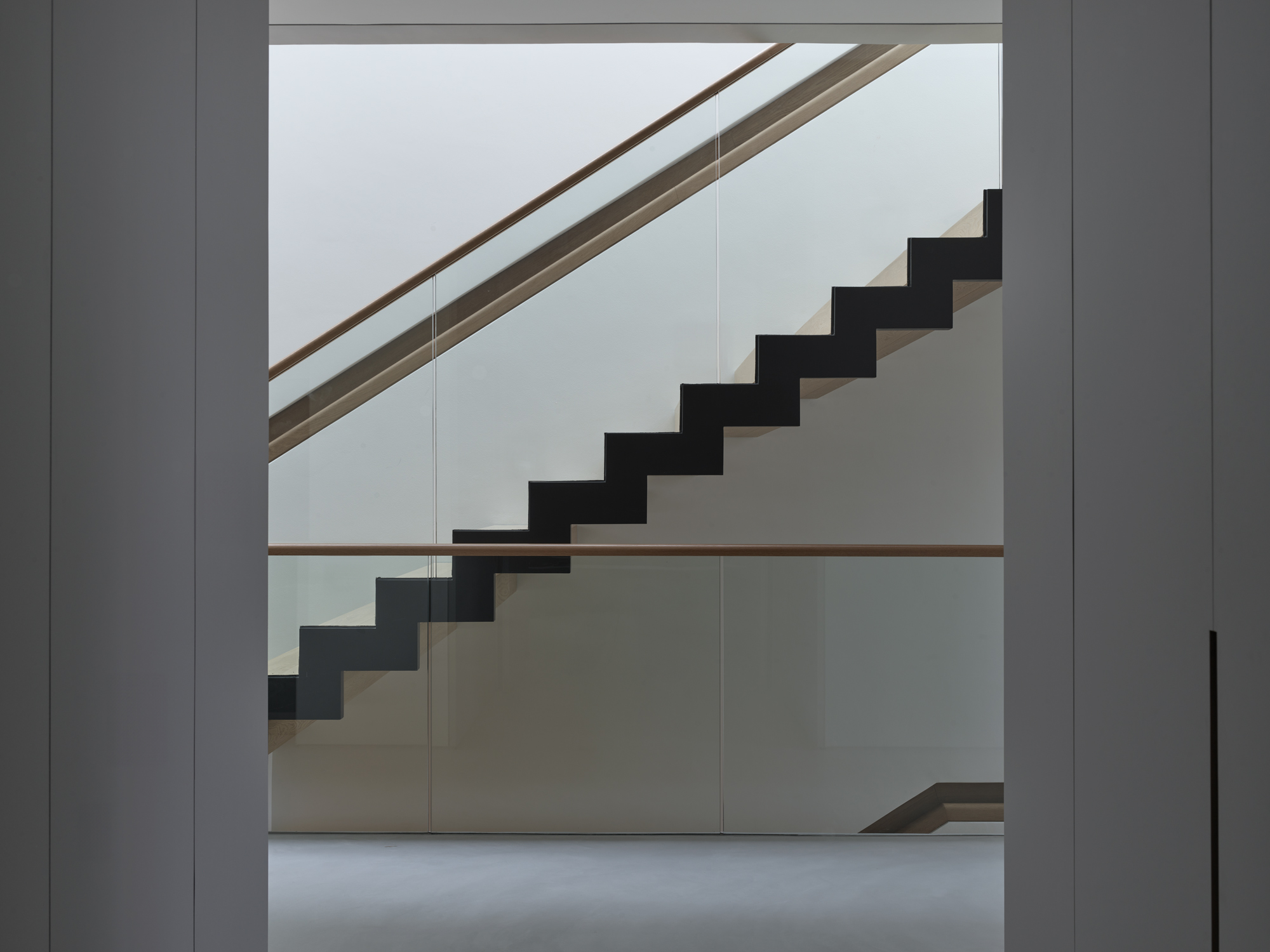 Restrain and quiet form is a palpable attribute in this house
Restrain and quiet form is a palpable attribute in this house
The result leans toward the traditions of Modernist architecture, featuring a boxy form in-filled with privacy- and sun-shading screens at the front elevation. Timber and timber-coated aluminium accents in the window screens and ceilings provide a warm counterpoint to the stoic shell.
- FIT FOR THE TROPICS
- ADAPTABILITY AND LIVEABILITY
- THE PLEASURES OF LIGHT
Adaptability and Liveability
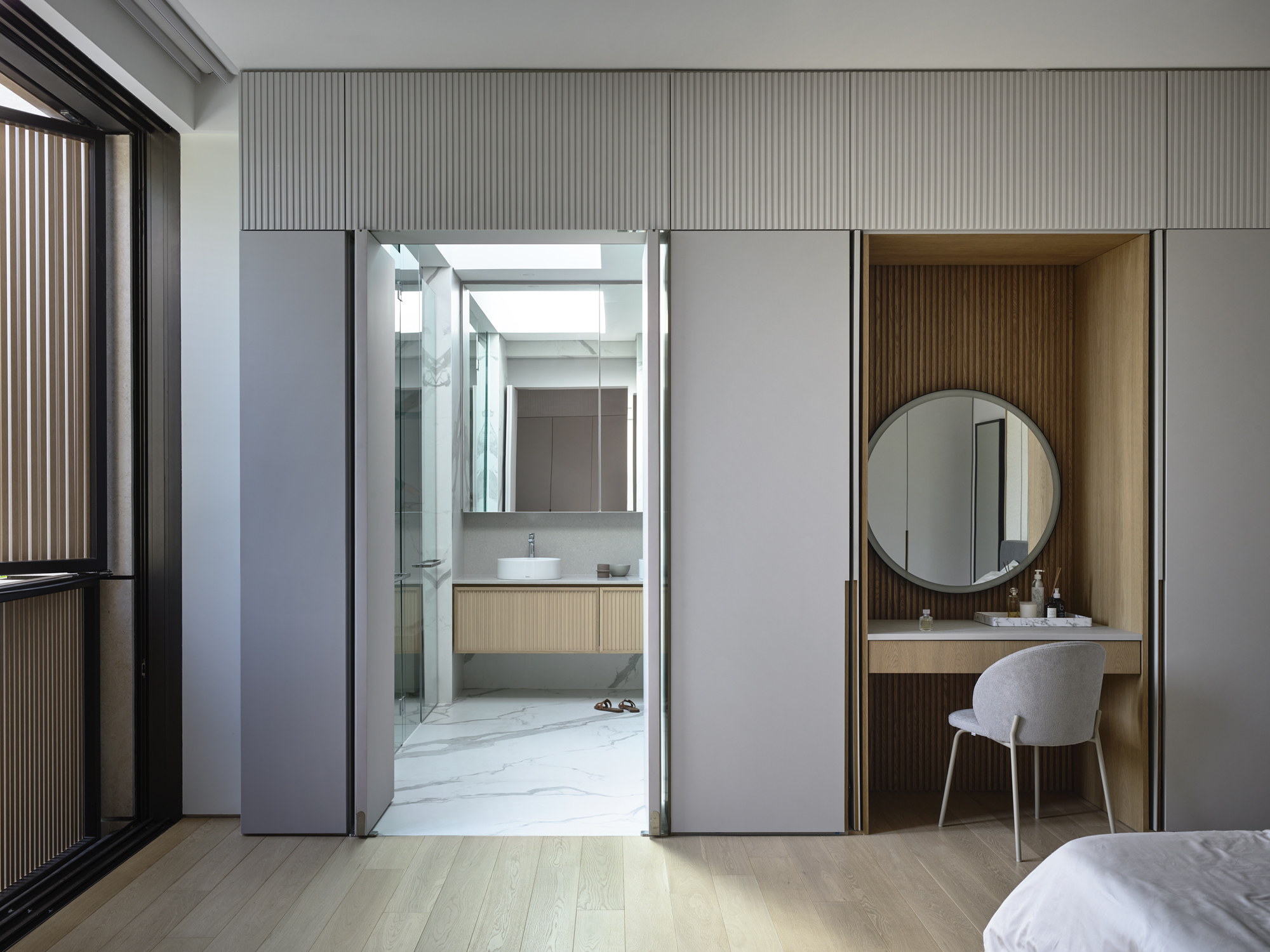 In the master bedroom, concealed doors open to the bathroom and a vanity
In the master bedroom, concealed doors open to the bathroom and a vanity
Inside, there are two aspects on every level that differentiate the home from cookie-cutter semi-detached houses: The first – exceptionally wide corridors, useful for children at play; the second are sliding doors separating the corridors from the rooms that easily shut away private zones when guests come by. This adaptability is an important contributor to liveability.
For instance, closing the sliding doors on the second storey foyer signals the couple’s private time with their children. Nestled within is a playroom shared by the master bedroom and children’s bedrooms. The latter has sliding wall panels that are kept open as the children are young, but can be closed to define two independent rooms when nearing teenage years.
“Upon entry, guests are greeted by a spacious foyer. This leads into a triple-volume circulation space, which houses the linear Oak timber staircase serving as a central spine connecting various areas on each floor,” describes Arango. A skylight along its entire length that dips down on both front and rear elevations illuminates this ‘spine’. Aside from brightening the interiors during the day, it also imbibes the interiors with a sense of place and time affected by the mutable nature of tropical weather even when one is indoors.
(Related: Scale, humanity, and a sense of place)
- FIT FOR THE TROPICS
- ADAPTABILITY AND LIVEABILITY
- THE PLEASURES OF LIGHT
The Pleasures of Light
“Natural light is so important; it affects one’s mood and mental state,” comments the husband. He receives plenty of it in his study at the attic where he works from home often. Next door, his wife, a Pilates instructor, also enjoys abundant sunshine in her exercise studio. Full height sliding glass doors open both of these rooms to a terrace and unobstructed sky views. Adaptability features on this level as well; should one of the children decide to stay here with his family after marriage, the entire attic can be converted to a suite, linked to the current family room and a bathroom.
On the ground storey is another outdoor space to enjoy nature. The open-plan dry kitchen, living and dining spaces open to a capacious timber terrace, shaded by a large cantilevering canopy. A glass oculus in the ceiling is a playful punctuation to the expansive ceiling.
-
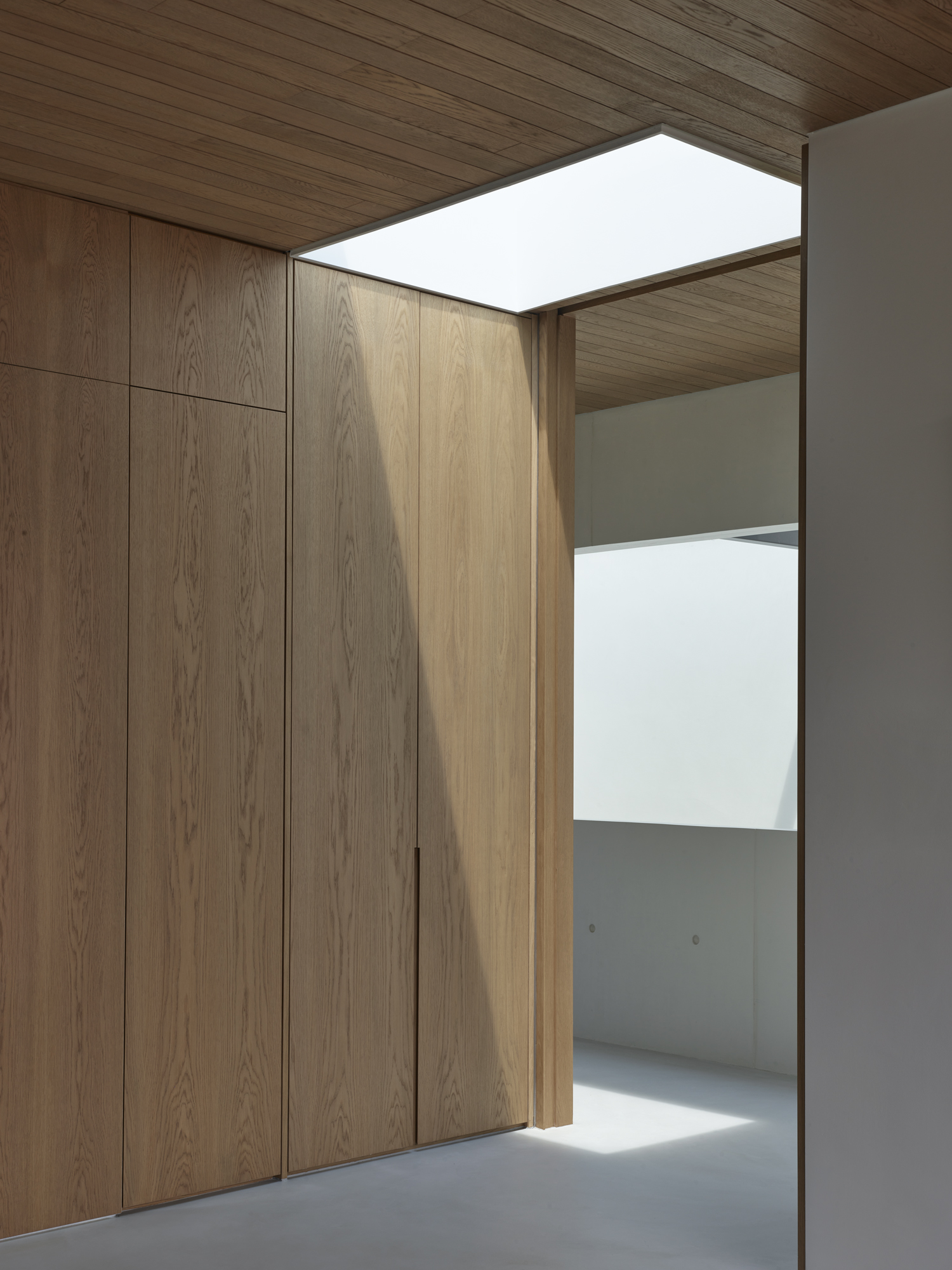
Skylights highlight the time of day in the attic
-
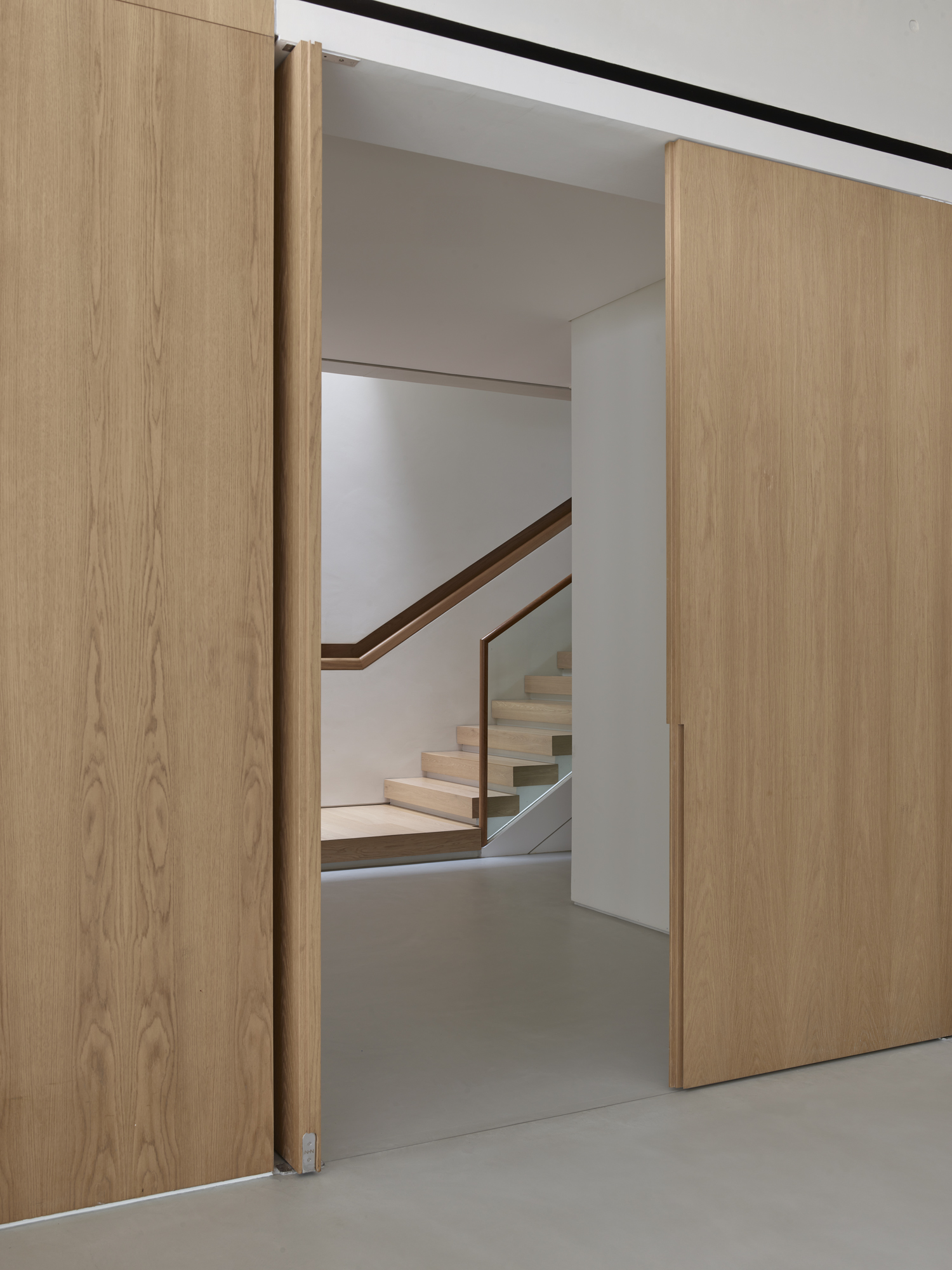
Large doors close off the foyer from the main communal areas on the first storey
-
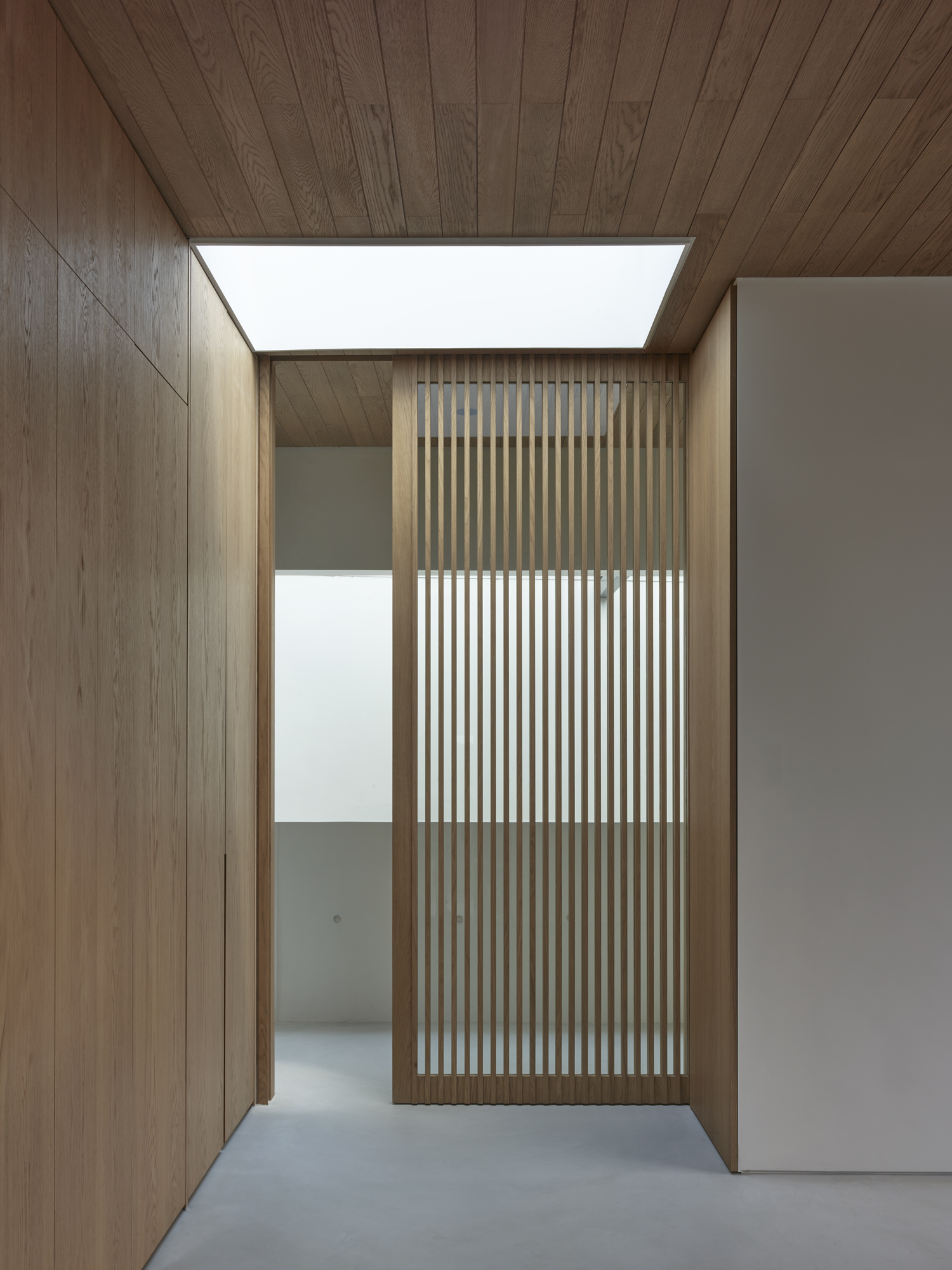
Screen doors filter light into the family room at the attic
Click to next slide
“We spend a lot of time at home now and entertain every two weeks. That is the best feedback; this is really a home and not just a house,” says the husband, musing that friends find it hard to leave when they visit. And no wonder: Transparency, flexibility, comfort, wind, light, space, and connection – all tenets of an inviting home are present here.








 White walls, natural light, and light timber evoke a minimalist sensibility
White walls, natural light, and light timber evoke a minimalist sensibility
 Restrain and quiet form is a palpable attribute in this house
Restrain and quiet form is a palpable attribute in this house
 In the master bedroom, concealed doors open to the bathroom and a vanity
In the master bedroom, concealed doors open to the bathroom and a vanity







-NAC Facade L2.jpg&w=500&h=550&crop-to-fit)
 Back
Back
